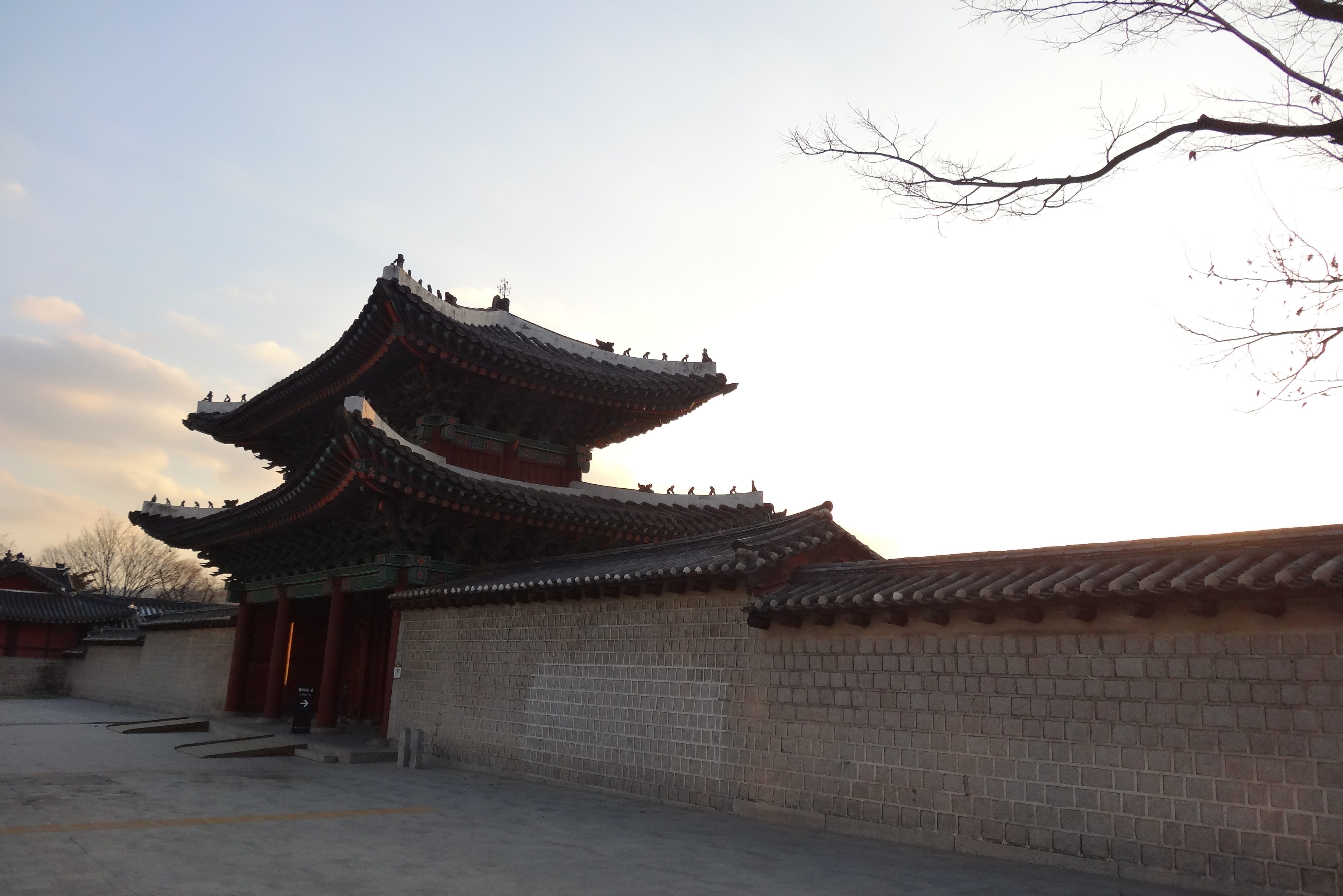Travel period Feb 2017
The “Palace of Flourishing Gladness”
Located next to Changdeokgung Palace is Changgyeonggung Palace so it’s probably a good idea to visit both at the same time. It was the third palace to be built in Joseon Dynasty, after Gyeongbokgung Palace & Changdeokgung Palace. The palace was originally meant to be the residence of three queen dowagers due to a lack of living space at Changdeokgung, not as a seat of government.
Like many of the royal palaces, Changgyeonggung was severely stripped down during the Japanese colonial period, but Changgyeonggung experienced one of the biggest degradation’s when it was converted into a park and zoo, and demoted from its palace status. It was only in 1983 that the palace really began its restoration with its zoo and botanical gardens, relocating down south to what is now Seoul Land.
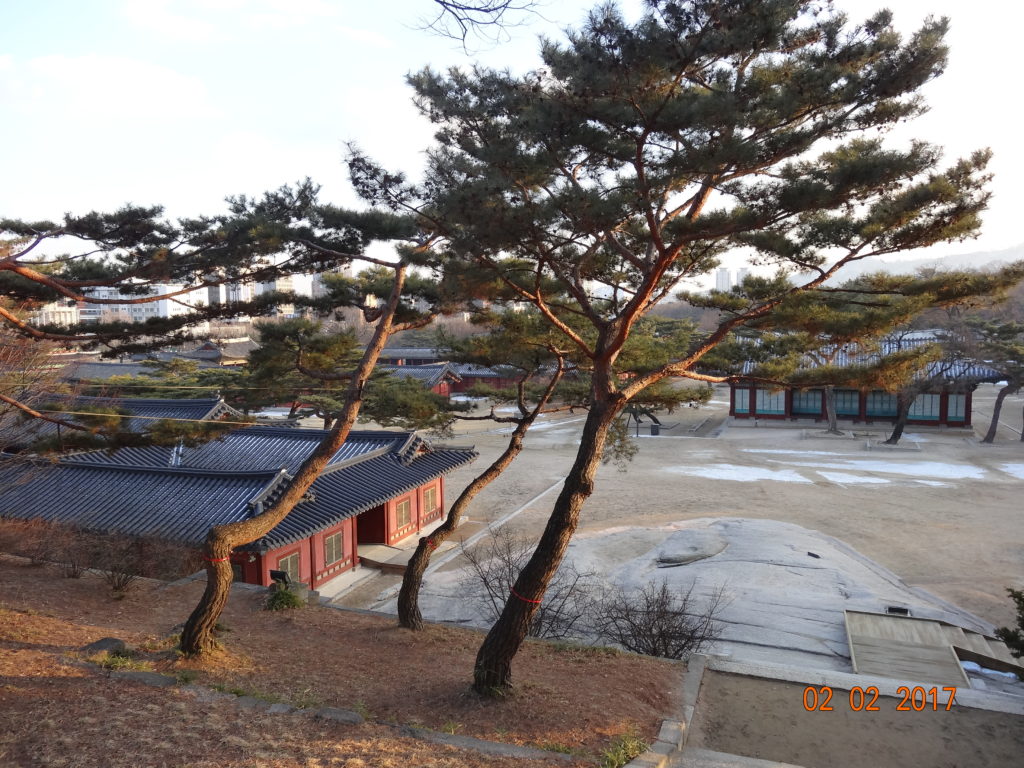
Story be told
The courtyard in front of Jungjeongjeon was the site of the infamous and tragic sealing alive of Crown Prince Sado by King Yeongjo. Allegedly, Prince Sado was a promising, but mentally ill man, who is said to have, among his worst deeds, killed and raped. Heir to the throne, the royal family worried about the consequences if Sado were to become king. To prevent this, Yeongjo escorted his son Sado to Seonninmun Gate on the eastern side of the palace. Sado was locked inside a rice casket where he eventually starved to death.
The wife of Sado, Hyegyong, kept the murder a secret until the death of Yeongjo in 1776. She revealed the secret in her memoir. The son of Sado, Jeongjo, became the next king of the Joseon Dynasty after the death of Yeongjo. King Jeongjo, a much-respected ruler, eventually built Hwaseong Fortress (also a UNESCO World Heritage Site) to house and honor his father’s remains.
This is an interesting connection between Changgyeonggung and Hwaseong Fortress.
The Palace
As we entered the main gate of Changgyeonggung Palace, that was Honghwamun Gate, we were approached by a Korean lady offering an English guided tour throughout the palace.

Our tour started at Okcheongyo Bridge, an arch bridge over a pond, a typical design of the Joseon Dynasty palaces.
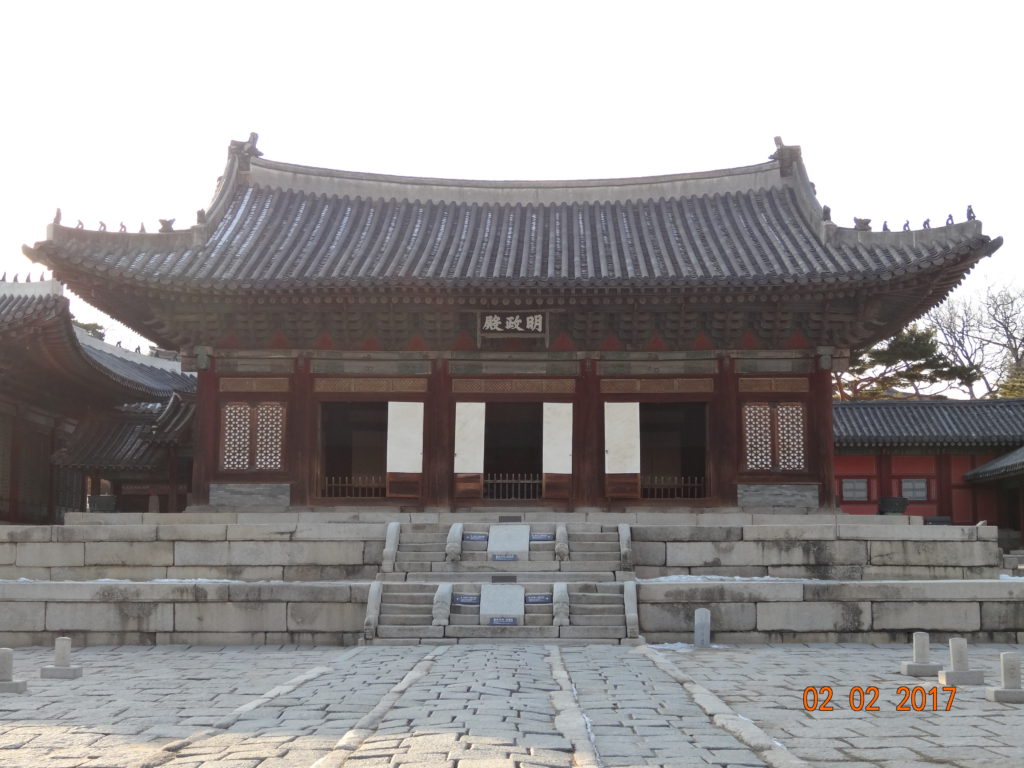
Myeongjeongjeon Hall is the main hall of Changgyeonggung Palace. Rebuilt in 1616, it is now the oldest remaining main hall of all the palaces in Seoul. The modest one-story structure is built upon a two-tiered woldae, or elevated stone yard, which is a common feature of other royal residences. Wide and flat rectangular stones can be found in the courtyard in front of the building. At the center of the courtyard is a three-level walkway that adds dignity to the hall. The center walkway was used solely by the king.
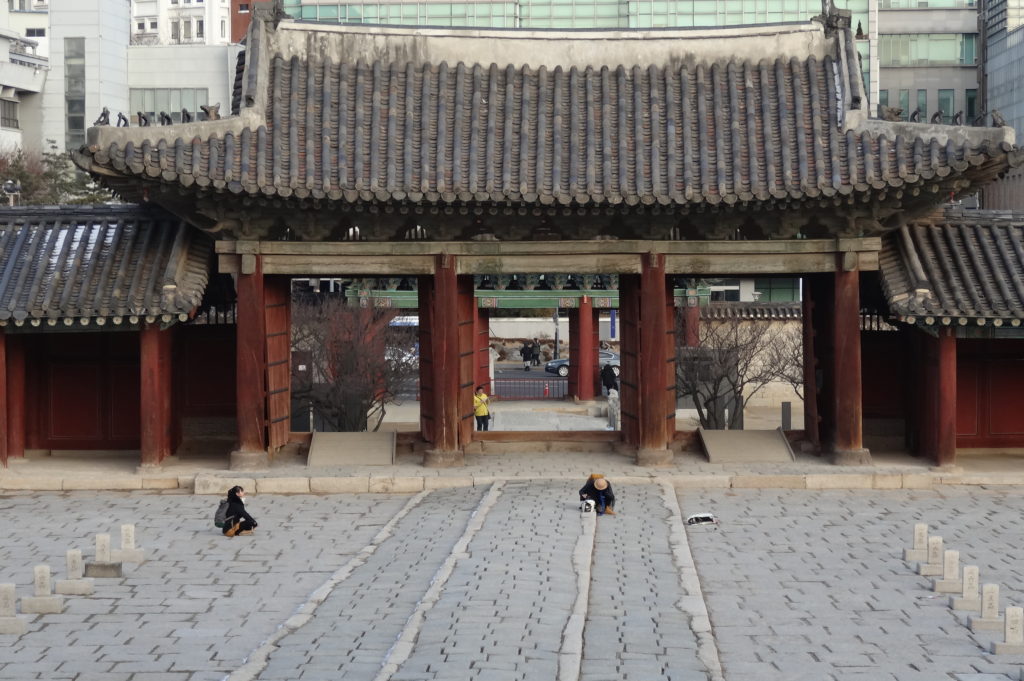
Enclosing the courtyard is Myeongjeongjeon Gate. The area surrounding the gate, known as a haenggak, or roofed wall, was used during funeral preparations by royal guards.
The Angbuilgu Sundial, also referred to as the Hemispheric Sundial, was an important and widely used astronomical scientific device used to tell time. It was invented in 1434 during the 16th year of the reign of King Sejong. It got its name, Angbuilgu, from the pot shape design. It literally means “upward looking kettle that catches the shadow of the sun.”
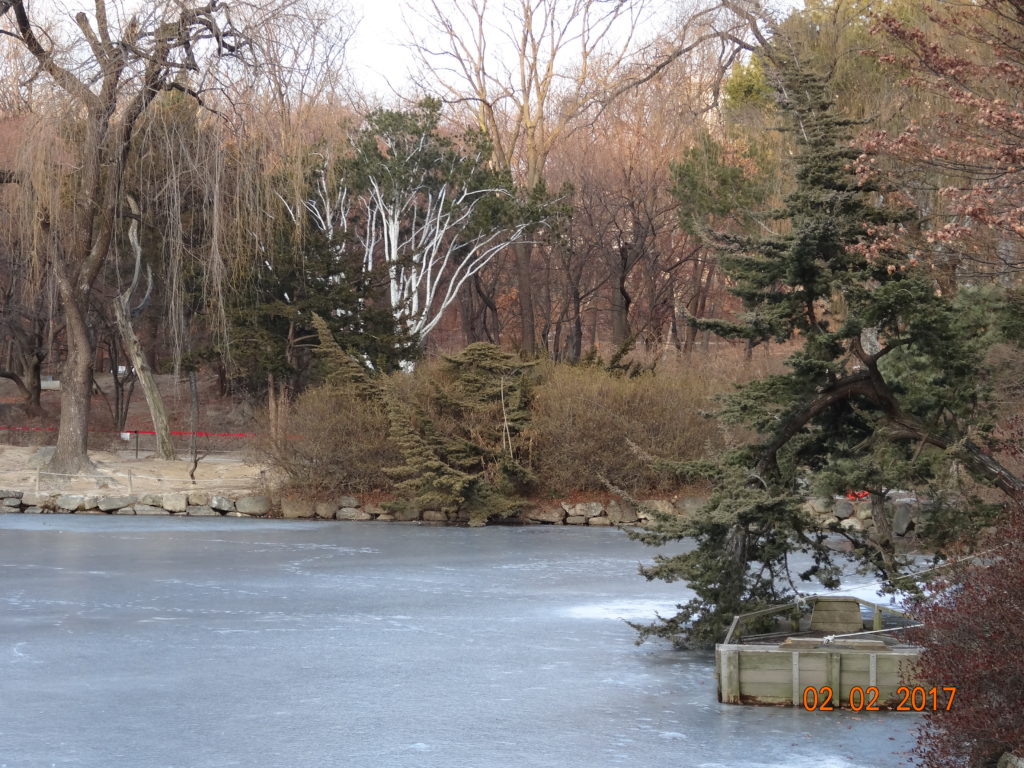
Chundangji Pond, located near Daeonsil (Great Greenhouse) consists of two ponds, Daechundangji and the smaller Sochundangji. There used to be rice fields partly covering them, that were tended to by the king, said to help him with empathizing with the efforts and hard work of the commoners.
Daeonsil (Great Greenhouse) is an enclosed botanical garden that was built in 1909 and features a royal motif roof with a repeated plum design. The design of the greenhouse, that features pointed arches and window frames, is based on the design of The Crystal Palace in London, England.
Gwandeokjeong Pavilion, meaning “take advantage by shooting arrows”, was known as Chuimijeon. It was built for archers, as the surrounding area was used for military training. The structure is located in the north eastern corner of Changgyeonggung Palace.
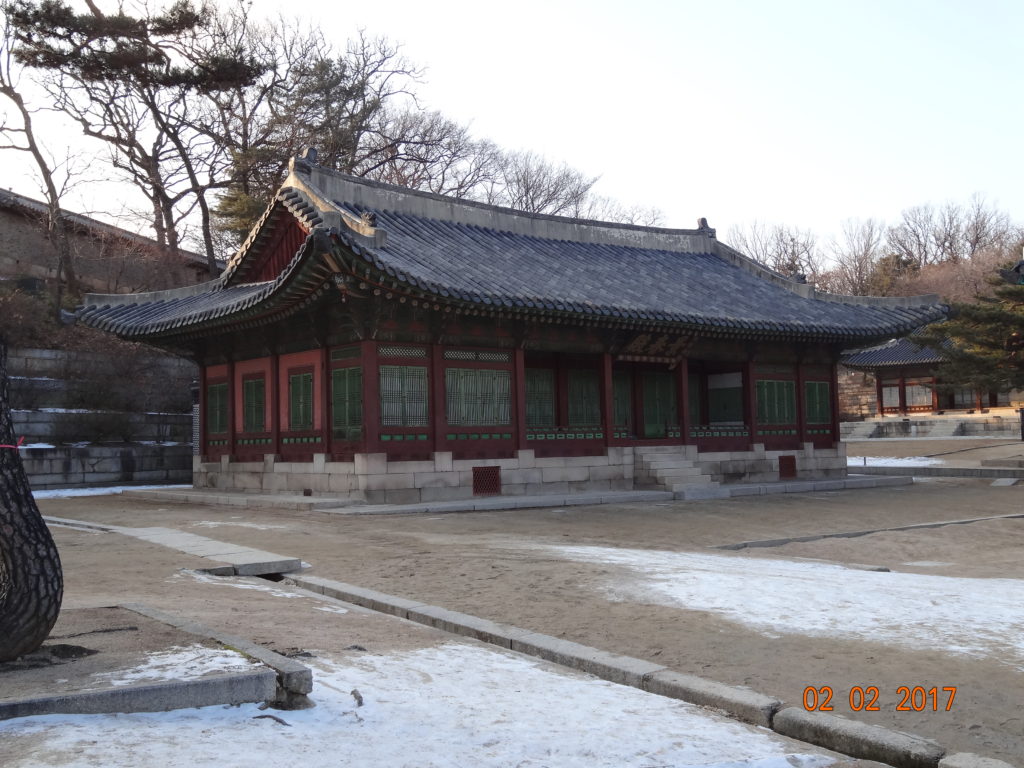
Gyeongchunjeon Hall, next to Hwangyeongjeon, was the sleeping residence of the wife of the deceased king at Changgyeonggung Palace. It was also here, that multiple Joseon kings were born. King Jeongjo named this building “Birth Hall”.
The pavilion was destroyed by the Japanese invasion in 1592, then rebuilt in 1616, and again was destroyed by fire in 1830. The building seen today was built in 1834.

Haminjeong Pavilion was where banquets were held and where the king received high performing civil and military officials at the palace. The name means “the whole world is soaked with the benevolence and virtue of the king.”
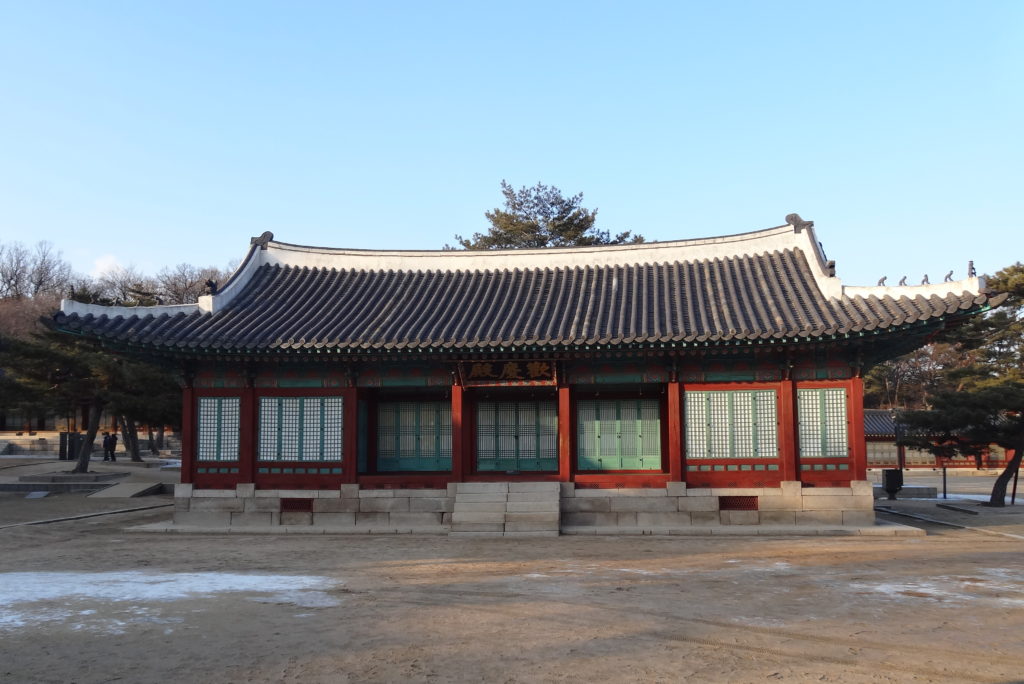
Hwangyeongjeon Hall was the sleeping residence for kings, princes, and their wives while they were at Changgyeonggung Palace.
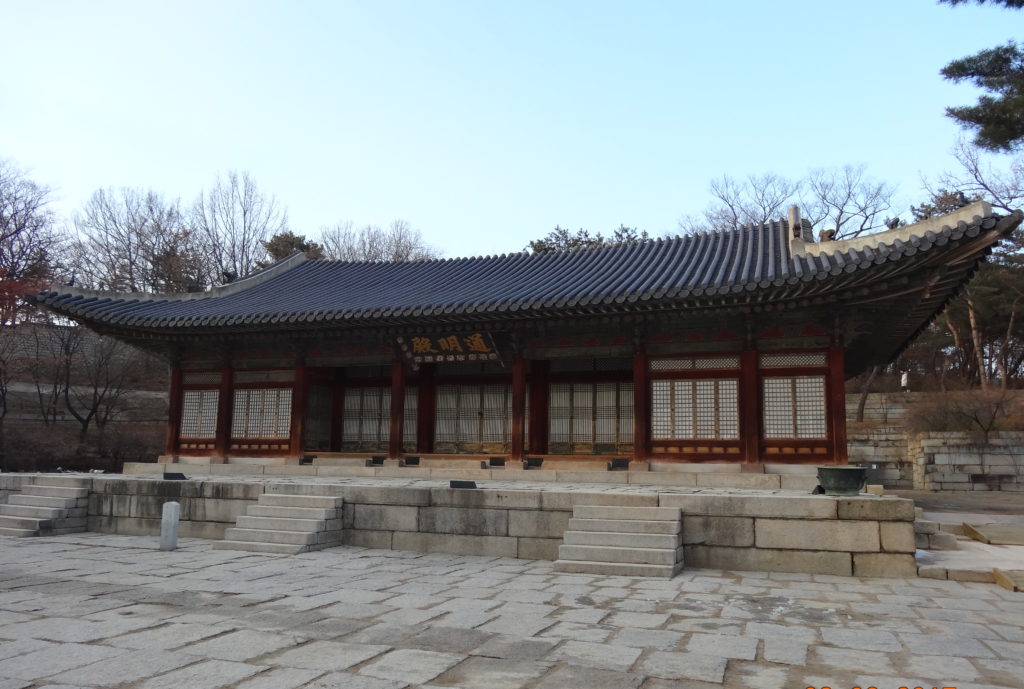
We visited the Tongmyeongjeon, the main hall in the inner court. This was built in 1484 and served as the residential quarters for the king & queen at the palace.
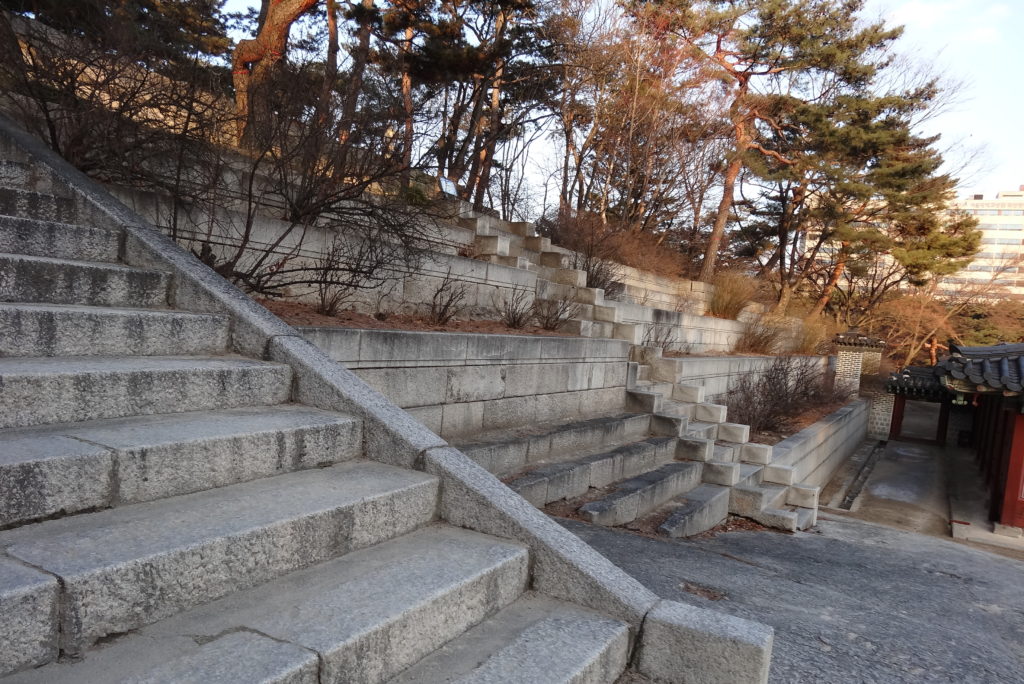
We then walked up the stones past Tongmyeongjeon to Jagyeongjeon site, an elevated spot where we could get a beautiful view of the palace compound. It was the location of the residence of the queen mother. It was in built in 1777 by King Jeongjo for his mother, Queen Heongyeong. It is situated at a spot above Changgyeonggung Palace.
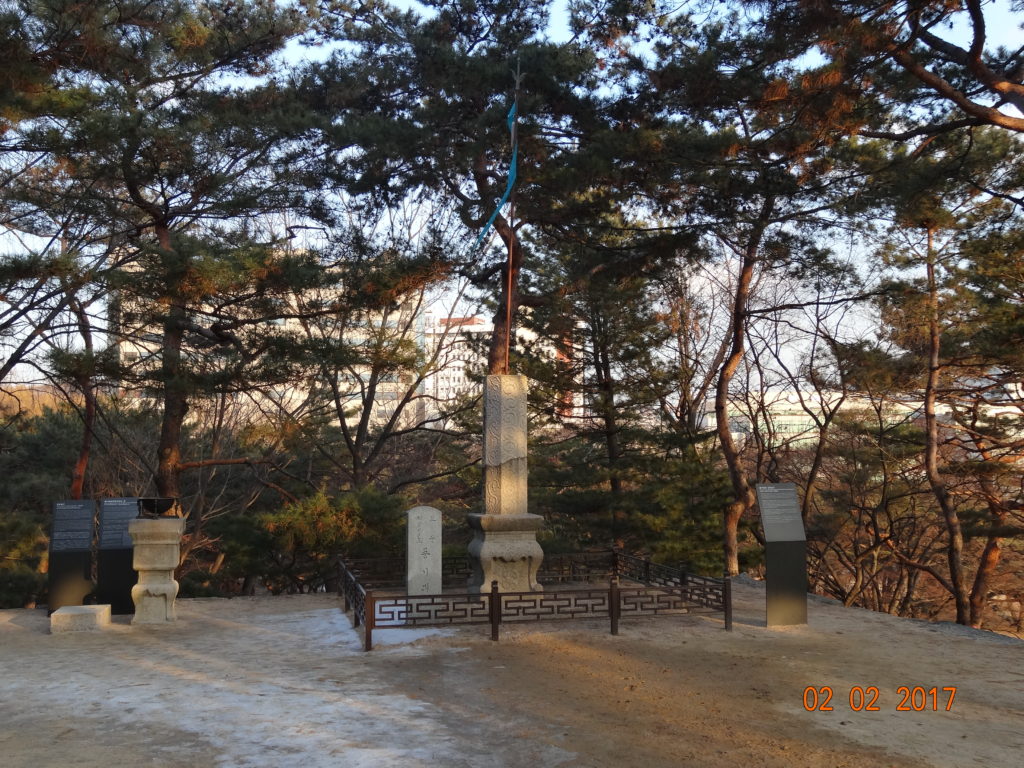
Punggidae is a stone measuring instrument used to detect the speed of wind and the direction it is blowing. Punggidae is decorated with scroll designs and believed to have been constructed sometime in the 18th century. To use the instrument, a pole was inserted into a hole at the top of the stone. A piece of cloth was attached to the end of the pole. When the wind picked up, the piece of cloth would wave in the air. This would indicate the wind speed and direction.
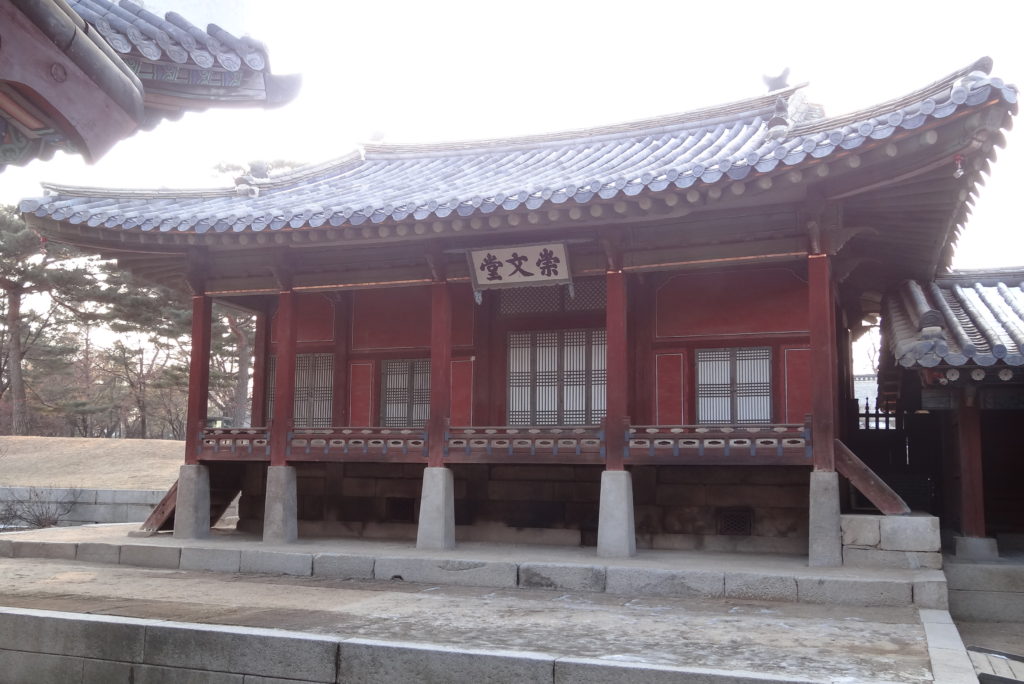
Sungmundang Hall was used for banquets and conferences. It was here where the king would discuss state affairs with officials and literature with scholars.
Taesil are shrines that stored the placenta and umbilical cords of the children of the royal family. Next to the shrine is an inscribed stone tablet, telling the story about the placenta of King Seongjong. This stone tablet is known as a taesilbi.
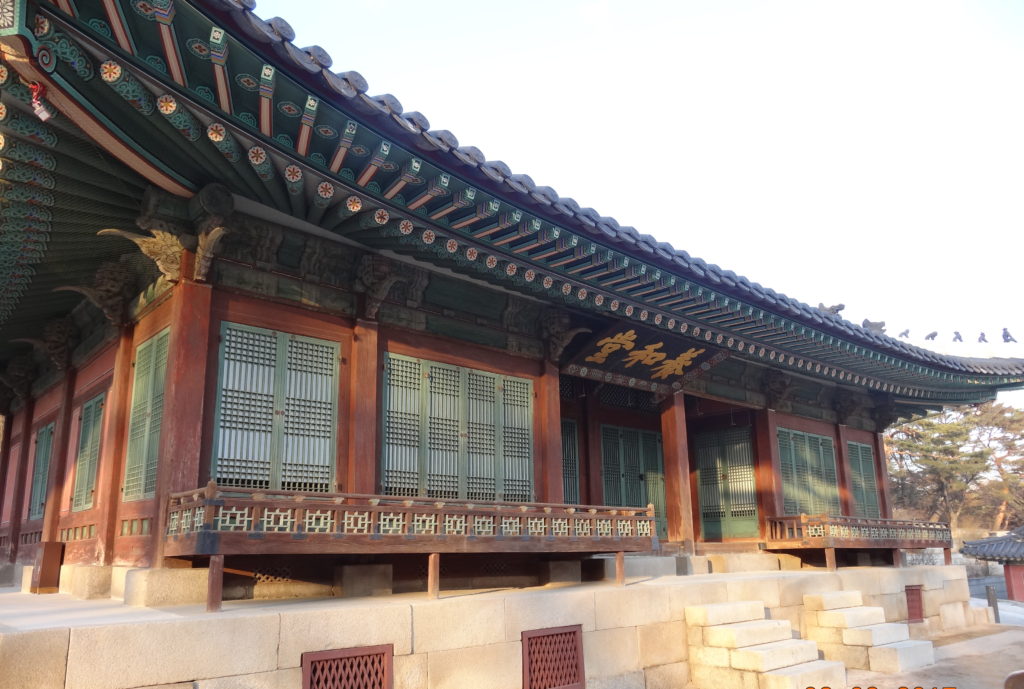
Yanghwadang Hall was the residential quarters of the dowager queen or widow of the king. The structure has been destroyed and rebuilt multiple times over the years. During the second Manchu invasion of Korea, King Injo took refuge here. The invasion occurred in 1636 when the Qing Empire of China invaded the Joseon Dynasty.
Shortly after, we were brought to Chundangji Area, this was where our comprehensive guided tour ended and we were free to roam around within the palace. We must salute the friendly tour guide for her professional service, especially as she is a volunteer guide, who conducts such informative tours out of pure interest for Korean history!
Directions to Changgyeonggung Palace
Take Subway Line 4 to Hyehwa Station (Exit 4).
Hours
April-October: 9:00-18:30
November and March: 9:00-17:30
December-February: 9:00-17:00
Ticket office close 1 hour before closing time.
Guided Tours in English are at 11:00 and 16:00.
Closed on Monday
Fees
Adult: KRW 1,000
Child: KRW 500
This Palace is included with the Integrated Ticket of Palaces.
Note: The information provided in this post was correct at time of publishing but may change. For final clarification please check with the relevant service.

